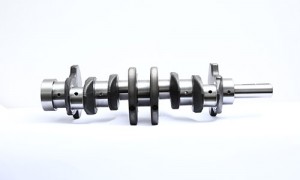Crankshaft position sensors play a crucial role in optimizing the performance of gasoline engines in automobiles and motorcycles.
This essential component contributes significantly to engine efficiency, power delivery, and overall reliability.
In this article, we will explore the functions, advantages, and user experience of crankshaft position sensors in gasoline-powered engines, and discuss the different types of crankshafts, including forged, billet, and full machining crankshafts.
Additionally, we will explain why these crankshafts are designed specifically for gasoline engines and not for diesel engines.
Understanding the Function of Crankshaft Position Sensors
The primary function of a crankshaft position sensor is to monitor the rotational speed and position of the engine’s crankshaft.
This information is vital for the engine control unit (ECU) to determine the correct ignition timing and fuel injection parameters, ensuring optimal engine performance and efficiency.
By accurately detecting the crankshaft’s position, the sensor plays a critical role in preventing engine misfires, improving fuel economy, and reducing emissions.

The Advantages of Crankshaft Position Sensors in Gasoline Engines
There are numerous advantages to using crankshaft position sensors in gasoline engines, including:
Improved engine performance: By providing precise information on the crankshaft’s position and speed, the sensor enables the ECU to optimize ignition timing and fuel injection, resulting in enhanced power delivery and engine responsiveness.
Increased fuel efficiency: The sensor’s ability to optimize ignition and fuel injection parameters translates to better fuel economy, ultimately saving users money and benefiting the environment.
Reduced emissions: Accurate crankshaft position information helps reduce harmful emissions, contributing to a cleaner and more sustainable environment.
Enhanced engine reliability: By preventing engine misfires and ensuring optimal engine performance, the crankshaft position sensor contributes to a more reliable and longer-lasting engine.
Types of Crankshafts: Forged, Billet, and Full Machining
There are several types of crankshafts available for gasoline engines in automobiles and motorcycles:

Forged crankshaft: Forged crankshafts are made by heating and hammering a metal billet into the desired shape.
This process results in a strong and durable crankshaft with excellent resistance to fatigue and wear.
Billet crankshaft: Billet crankshafts are created by machining a solid piece of metal into the required shape.
This process offers increased precision and customization options, making it a popular choice for high-performance applications.
Full machining crankshaft: Full machining crankshafts involve a combination of forging and machining processes, providing an ideal balance of strength, precision, and durability.
Crankshafts and crankshaft position sensors discussed in this article are designed specifically for use in gasoline-powered automotive and motorcycle engines, making them unsuitable for diesel engines.
This specialization ensures that the components are optimized for the unique requirements of gasoline engines, providing users with an unmatched driving or riding experience.
In conclusion, crankshaft position sensors play an indispensable role in optimizing the performance, efficiency, and reliability of gasoline engines in automobiles and motorcycles.
By understanding the function and advantages of these sensors, as well as the differences between various types of crankshafts, users can make informed decisions to enhance their engine’s performance and longevity.
Trust our expertise and dedication to excellence to provide you with the ideal crankshaft and crankshaft position sensor for your gasoline engine, taking your driving or riding experience to new heights.